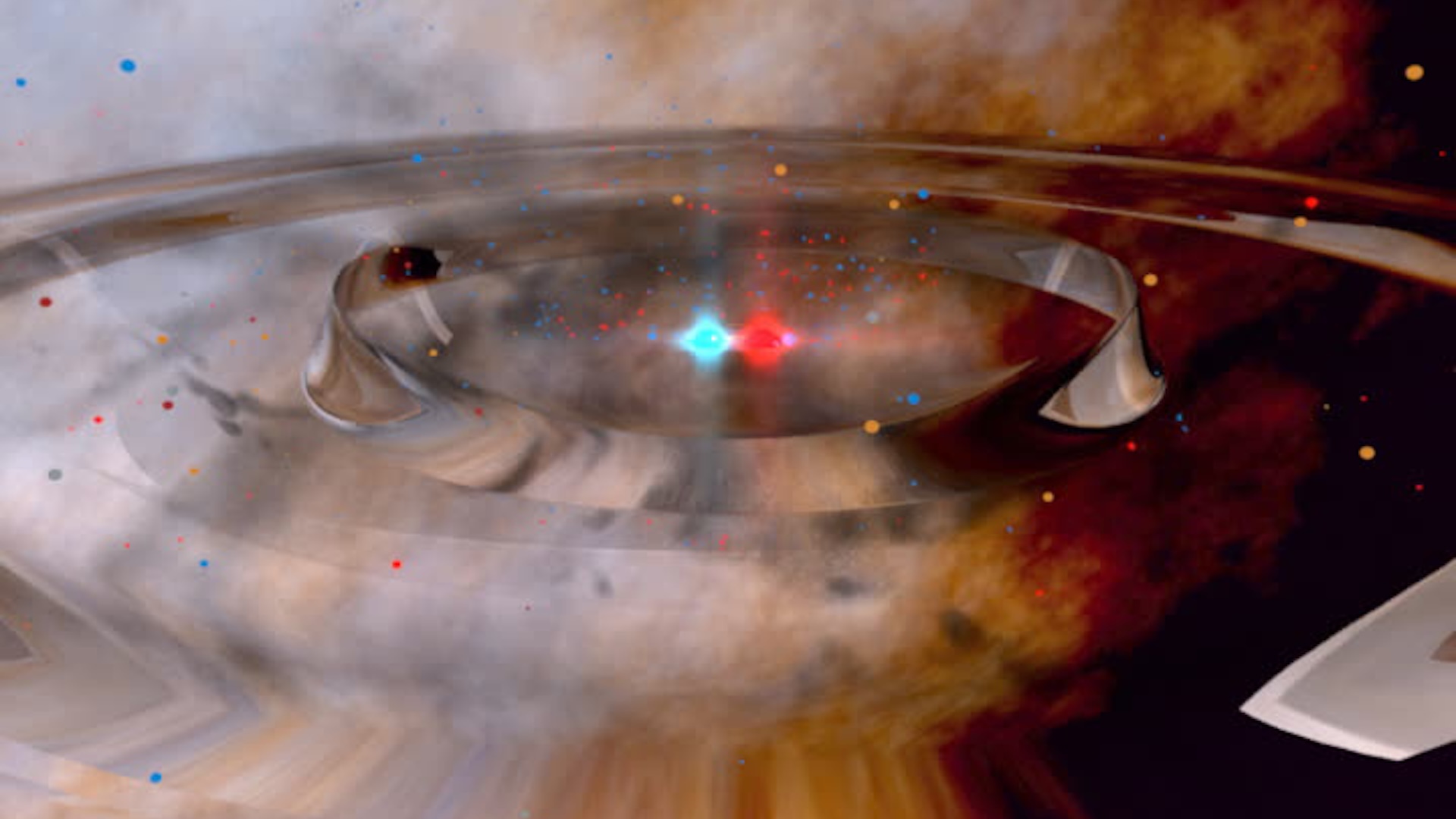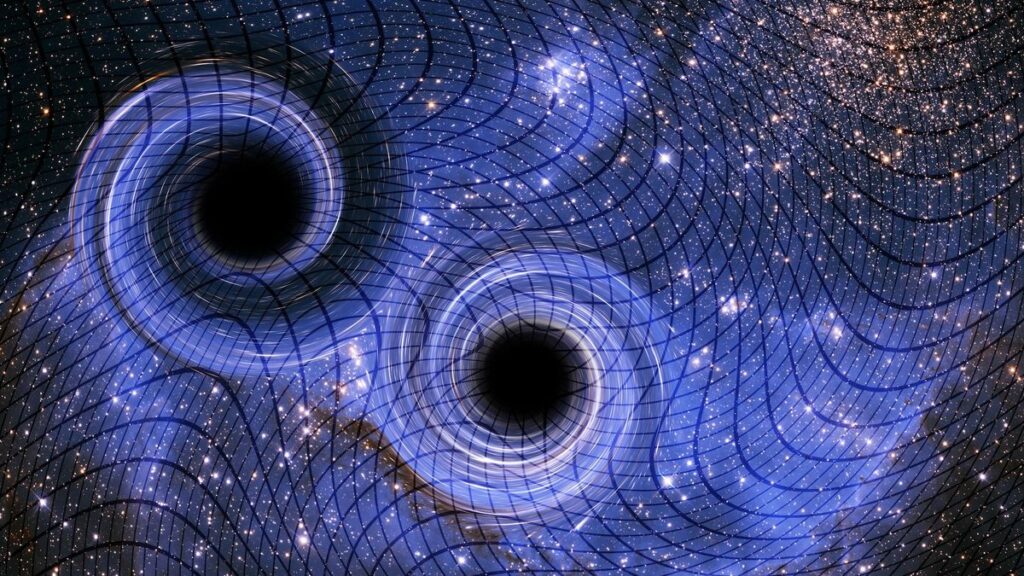A team of theoretical physicists has proposed a new way to test one of the most intriguing predictions of Einstein’s theory of general relativity: gravitational memory.
This effect refers to a permanent shift in the fabric of the universe caused by the passage of space-time ripples known as gravitational waves. Although these waves have already been detected by observatories such as the Laser Interferometer Gravitational-Wave Observatory (LIGO) and the Virgo interferometer, the waves’ lingering imprint remains elusive.
The researchers suggest that the cosmic microwave background — a faint glow left over from the Big Bang — might carry the signatures of powerful gravitational waves from distant black hole mergers. Studying these signals could not only confirm Einstein’s prediction but also shed light on some of the most energetic events in the universe’s history.
“The observation of this phenomenon can provide us with more knowledge of different fields of physics,” Miquel Miravet-Tenés, a doctoral student at the University of Valencia and a co-author of the study, told Live Science via email. “Since it is a direct prediction of Einstein’s theory of general relativity, its observation would serve as a confirmation of the theory, much like the observation of gravitational waves by LIGO, Virgo and KAGRA [the Kamioka Gravitational Wave Detector] has done! It can also be used as an additional tool to study some astrophysical scenarios, since it can contain information about the type of events that generate memory, such as supernovae or black hole collisions.”
How gravitational waves leave a mark on the cosmos
According to general relativity, massive objects warping space-time can generate ripples that travel across the universe at the speed of light. These gravitational waves arise when massive bodies accelerate, such as when two black holes spiral inward and merge.
Unlike ordinary waves that pass through matter and leave it unchanged, gravitational waves can permanently alter the structure of space-time itself. This means that any objects they pass through, including elementary particles of light known as photons, may experience a lasting change in velocity or direction. As a result, the light traveling across the cosmos could carry a memory of past gravitational-wave events imprinted in its properties.
Related: ‘Einstein’s equations need to be refined’: Tweaks to general relativity could finally explain what lies at the heart of a black hole
The researchers explored whether this effect could be observed in the cosmic microwave background — a relic radiation field that has been traveling through space since the universe was just a fraction of a percent of its current age. Subtle shifts in the temperature of this radiation could hold clues about gravitational waves from ancient black hole mergers.
“We can learn plenty of things,” Kai Hendriks, a doctoral student at the Niels Bohr Institute at the University of Copenhagen and another co-author of the study, told Live Science in an email. “For example, measuring gravitational memory in a gravitational wave signal gives us more information about the properties of the two black holes that produced this signal; how heavy those black holes were or how far away they are from us.”
But the implications extend beyond individual black hole mergers. If the imprint of gravitational memory can be detected in the cosmic microwave background, it could reveal whether supermassive black holes merged more frequently in the early universe than they do today. This could offer new insight into how galaxies and black holes have evolved over cosmic time.

Measuring the imprint
To determine whether the memory effect could be detected, the team calculated how black hole mergers influence the cosmic microwave background. Their analysis showed that these violent events should leave behind measurable changes in the background radiation, with the strength of the signal depending on how massive the black holes were and how frequently such mergers occurred throughout history.
“The wavelength of light is directly related to its temperature — small wavelength means high temperature and large wavelength means low temperature,” David O’Neill, a doctoral student at the Niels Bohr Institute and another co-author of the study, told Live Science in an email. “Some of the light affected by the gravitational wave memory becomes ‘hotter’ while some of the other light becomes ‘colder.’ The regions of hot and cold light form a kind of pattern in the sky. We predict this pattern to be present in the cosmic microwave background, albeit quite faint.”
Although current telescopes that are capable of detecting microwave radiation, such as the Planck satellite, have mapped the cosmic microwave background in exquisite detail, the temperature shifts caused by gravitational wave memory are expected to be extremely small — on the order of a trillionth of a degree. This makes them difficult to observe with existing technology. However, future telescopes with greater sensitivity may be able to detect these subtle distortions, providing a new way to probe the invisible gravitational influences that have shaped the universe.
Refining the models for future tests
While the study demonstrates that gravitational wave memory should leave a trace in the cosmic microwave background, the researchers acknowledge that their calculations were based on simplified assumptions. More refined models will be needed before definitive predictions can be made.
For instance, the team initially assumed that all merging black holes had the same mass, whereas in reality, their masses can vary significantly. Supermassive black holes range from a few million to tens of billions of times the mass of the sun, meaning that their influence on the cosmic microwave background will also differ. Accounting for this variation will be important in future studies.
“Right now, the effect we’re studying is incredibly subtle. However, it’s possible that in certain regions of the sky, it could be unexpectedly strong,” Hendriks said. “To explore this, we need more advanced models that take into account the entire evolution of the universe. So not an easy task! But this could bring us closer to detecting this cosmic imprint and uncovering new insights into the evolution of the universe.”
